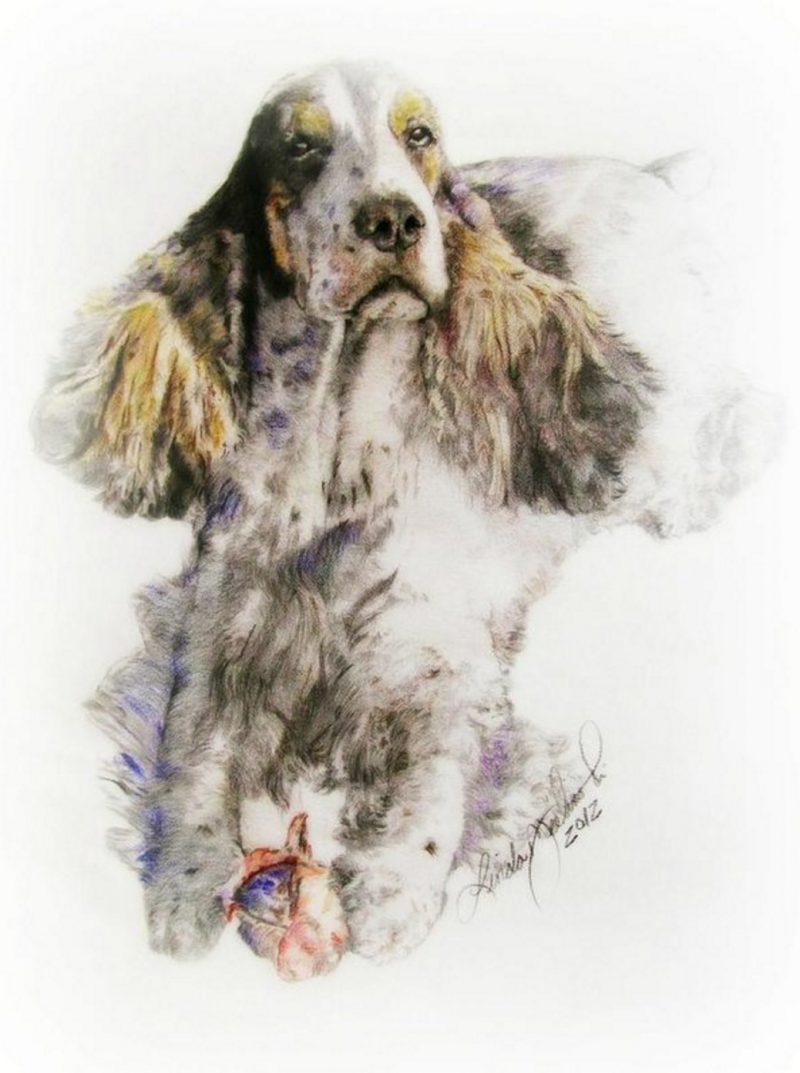
It’s no easy thing to write a successful breed standard, but what is a “successful” breed standard, anyway? We suppose opinions will vary, but to our way of thinking, it’s when respect is given to both a breed’s function and aesthetics in a comprehensible way. We think one sentence of the English Cocker Spaniel standard in particular does a nice job of this: “The English Cocker is a solidly built dog with as much bone and substance as is possible without becoming cloddy or coarse.” This one clause elegantly emphasizes the need for a sturdy, strong dog that isn’t “overdone,” and why this is important has everything to do with the dog’s purpose.
The English Cocker is a gun dog that has to push through tall grass, bushes and heavy thicket carrying game larger for its size than any other sporting breed. Put another way, an English Cocker Spaniel has be stronger for its size than any other gun dog, and this is true of all the smaller gun dog breeds. Too much bone (or substance), however, and the dog becomes lumbering and bulky.
For lack of a better way of putting it, breed standards are like instruction manuals for our breeds, and we think everyone should have read their dog’s breed standard at least once even if the dog won’t get within miles of a dog show. Standards are often revised, but those first breed standards provide insight into what aspects of a breed the authors thought was important enough to mention.
More of a “layman’s approach to a breed are anecdotal articles about what a breed is like to live with. They’re not a substitute for a standard, but rather a companion piece. Here’s one for the English Cocker.
English Cocker Spaniel, Danny, by Linda Zielinski
http://fineartamerica.com/profiles/linda-zielinski.html
http://www.facebook.com/artworkbylindaz
